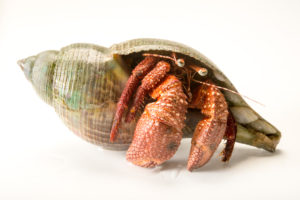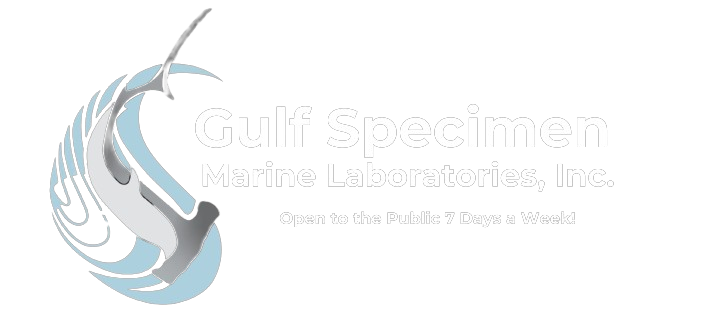
Ar-1410 GIANT RED HERMIT CRAB, Petrochirus diogenes
It is the largest species in the Western Atlantic. Its hairy red body, massive lobster like claws and bluish stalked eyes are a study in crustacean magnificence. Sporadic.
BIOLOGY
The right claw is the larger and most dominant claw. However, the size of claw differs in male and female P. diogenes (Smithsonian, 2010). Male hermit crabs may use their larger claws to defend their territories and mates (Smithsonian, 2010).
DIET
P. diogenes is omnivorous and has an unspecified variable diet that includes macroalgae and other invertebrates (Smithsonian, 2010). It has also been recorded to attack and feed on gastropods like conchs for both food and shelter (Iversen et al., 1986).
HABITAT
They are found from Cape Lookout, North Carolina to southern Florida and throughout the Gulf of Mexico and the Caribbean (Smithsonian, 2010). Juveniles are usually found inshore in estuaries while adults are usually found offshore in inlets and reefs (Smithsonian, 2010). They are also associated with muddy, sandy or shelly bottoms with beds of turtlegrass. However, they have also been collected in shallow areas around tidal flats (Smithsonian, 2010).
VIDEOS
ADDITIONAL READING
Chemical and chemotactic stimulation of feeding behavior in the hermit crab Petrochirus diogenes
Population biology of the hermit crab Petrochirus diogenes
REFERENCES
“Petrochirus diogen” Smithsonian Marine Station at Fort Pierce, https://naturalhistory2.si.edu/smsfp/irlspec/Petroc_diogen.htm
